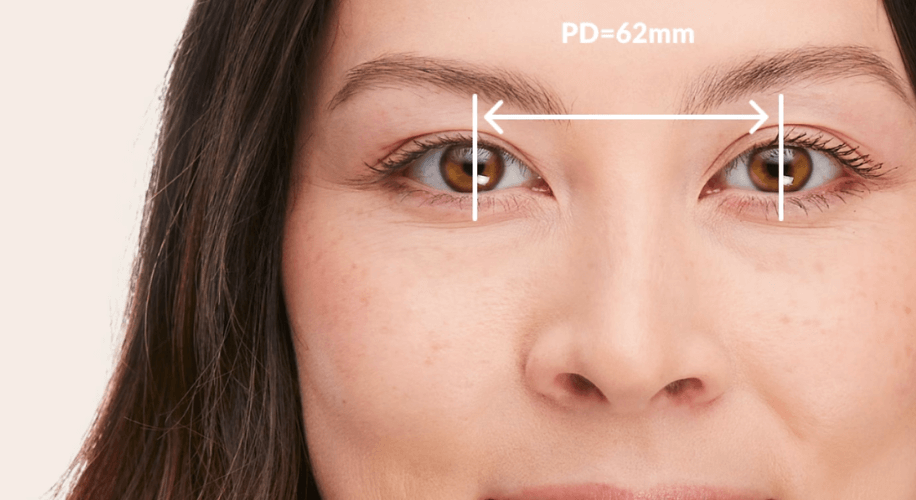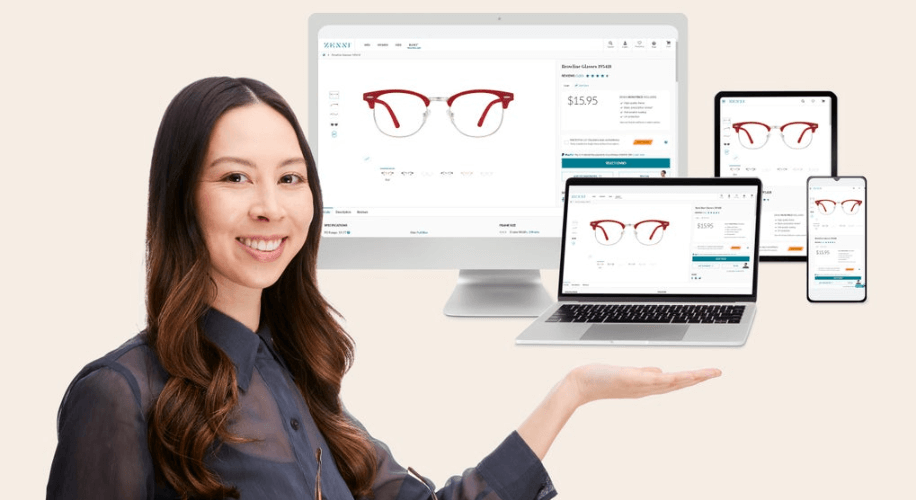Getting the Right Fit: How to Measure Pupillary Distance for Glasses

When it comes to choosing the perfect pair of glasses, one often overlooked but crucial measurement is the pupillary distance (PD). The pupillary distance is the distance between your pupils, and it plays a significant role in ensuring that your eyeglasses provide accurate vision correction. We will guide you through the process of measuring your pupillary distance at home, using simple tools like a ruler or an online PD measuring tool. By understanding how to measure your PD accurately, you can ensure that your glasses will be perfectly fitted to your eyes.
The Importance of Pupillary Distance

Pupillary distance refers to the distance between the centers of your pupils. It is a necessary measurement because it ensures that the optical centers of your lenses align with your pupils, allowing you to see clearly through the corrective lenses. When your glasses have an incorrect pupillary distance, it can lead to discomfort, headaches, and even visual distortion. Therefore, it is vital to measure your PD accurately to ensure optimal comfort and visual clarity when wearing glasses. Whether you are getting new glasses online or in-store, having the correct pupillary distance measurement is crucial when ordering prescription glasses.
Related: What is PD and Why Is it Important?
Methods to Measure Pupillary Distance

There are several methods to measure your pupillary distance accurately. Let’s explore a few of them:
- Using an Online PD Measurement Tool: An increasingly popular method is to use an online PD measurement tool. These tools use your webcam or smartphone camera to capture an image of your face and then calculate the distance between your pupils. It is a convenient and accurate way to measure your PD at home without the need for any additional tools.
- Using a Mirror and Ruler: If you prefer a more traditional approach, you can measure your pupillary distance using a mirror and a ruler that measures in millimeters. Stand in front of a mirror and hold the ruler against your forehead. Close your right eye and align the ruler’s zero mark with the center of your left pupil. Then, close your left eye and open your right eye. Take note of the measurement that aligns with the center of your right pupil on the ruler. This measurement is your pupillary distance.
- Seeking Professional Assistance: If you are unsure about measuring your pupillary distance accurately or have difficulty doing it yourself, it is recommended to seek professional assistance. Opticians and eye care professionals have the necessary tools and expertise to measure your PD accurately.
Tips and Tricks for Accurate Measurements

While measuring your pupillary distance, there are a few tips and tricks you can follow to ensure accurate results:
- Ensuring Proper Lighting: Make sure you are in a well-lit room when measuring your pupillary distance. Sufficient lighting will help you see your pupils clearly, allowing for a more accurate measurement.
- Positioning the Ruler Correctly: When using a mirror and ruler, position the ruler correctly against your forehead. It should be held steady and parallel to the floor. This will help you align the ruler accurately with the center of your pupils.
- Double-Checking the Results: After you have measured your pupillary distance, it is always a good idea to double-check the results. Repeat the measurement using the same method or try a different method to ensure consistency and accuracy.
Using Pupillary Distance for Online Glasses Shopping

Knowing your pupillary distance is especially important when shopping for glasses online. Here’s how you can utilize your PD measurement:
- Understanding the Frame’s PD Compatibility: When browsing for glasses on /b/all-glasses”>Zenni, pay attention to the frame’s PD Range and check if the frame is compatible with your PD. If your PD is not within range for the frame, then the lab will be unable to edge the prescription lenses or may charge you an additional fee.
- Utilizing PD Filter: Zenni allows you to filter glasses by pupillary distance. You can find the pupillary distance filter under “Frame Width”. Use this feature to narrow down your options and find frames that are suitable for your PD.
- Importance of Accurate PD Measurements for Prescription Glasses: For prescription glasses, accurate pupillary distance measurements are crucial. Incorrect PD measurements can lead to improper lens alignment, making the glasses less effective in correcting your vision. By knowing your pupillary distance, you can confidently provide this measurement when ordering prescription glasses online.
Measuring your pupillary distance is an essential step in ensuring that your glasses provide optimal comfort and visual clarity. Whether you choose to measure your PD at home using an online pupillary distance tool or seek professional assistance, accurate measurements are crucial for a proper glasses fit. By understanding the importance of pupillary distance and utilizing this measurement when shopping for glasses online, you can make informed decisions and find the perfect pair of glasses that enhance your vision and style.
About the Author: Dr. Sophia Moh, OD, ABOC
Dr. Sophia Moh, OD is an optometrist located in Bay Area, California. She completed her undergraduate studies at UC San Diego and earned her doctorate at UC Berkeley School of Optometry. She has experience in a variety of eye care settings including primary care optometry, general ophthalmology, community health clinic, and Veterans Affairs. Her mission is to help the world see better by developing high-quality, affordable eyewear for everyone. She is also a certified American Board Optician (ABO) and provides training and lectures on optical education topics.



 United States
United States